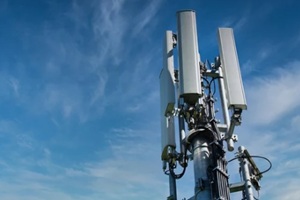 Networks that utilize 5G to accelerate business operations are becoming the norm, especially in specialized, competitive sectors like industry, agriculture, and manufacturing. A 5G network offers more bandwidth and less latency, which for IoT device networks can accommodate growing numbers of connected devices, including their security, compliance, and monitoring needs. A private 5G network offers greater performance than private LTE but does so in exchange for higher costs and greater management complexity.
Networks that utilize 5G to accelerate business operations are becoming the norm, especially in specialized, competitive sectors like industry, agriculture, and manufacturing. A 5G network offers more bandwidth and less latency, which for IoT device networks can accommodate growing numbers of connected devices, including their security, compliance, and monitoring needs. A private 5G network offers greater performance than private LTE but does so in exchange for higher costs and greater management complexity.
This article explains how private LTE networks function in a business setting, including how deploying 5G can have its advantages in competitive industries.
What Is The Difference Between Private LTE & 5G Networks?
LTE networks, including specialized variants like LTE-M and NB-IoT for low-bandwidth devices, support a wide range of corporate IoT applications. However, high bandwidth and power requirements may necessitate 5G to meet performance demands. The introduction of 5G technology, which has higher bandwidth, reliability, and capacity than past generations, has reset the competitive standards in most industries, especially concerning scalable IoT device networks.
A private LTE or 5G network allows organizations to more closely oversee the network’s connection integrity and security. When the network is private, the company’s IT department is responsible for maintaining connections in the place of major cellular providers like Verizon.
Private networks used to be limited to Wi-Fi or LPWAN networks, which made them insufficient in many IoT device use cases, such as healthcare device operations. However, many of today’s healthcare practices use private LTE or 5G networks to access IoT devices from remote locations through secure, reliable, and compliant transmissions.
For example, healthcare establishments often need remote access to patient files or real-time biometrics from wearable devices. Private 5G offers the highest speed, lowest latency, and largest device connectivity, but both 5G and LTE are viable in different situations.
Since the cost of establishing a private 5G network can be prohibitive for some businesses, some owners may consider private LTE networks but will have to forgo the performance and capacity upgrades of 5G. This may not be sufficient to meet performance demands or compliance in some industries, such as smart manufacturing.
The right network option for each business depends on its connectivity needs and budget and how they compare to the current state of cellular network provisioning.
What Are The Benefits Of Private LTE Or 5G Networks?
Private LTE and 5G networks provide businesses with valuable benefits in managing IoT devices at scale, including:

1. Higher Customization
Businesses with complex IoT solutions often require specific network configurations to link their devices, streamline data transmission and update processes, and maximize efficiency. Private LTE and 5G networks can provide this level of customization since the business retains full control over its network.
2. Less Latency
The introduction of 5G has realigned many industry performance standards to the lower latency connections it can provide. Private 5G or LTE connections can reduce latency by minimizing the network’s dependence on external data carriers and using edge computing for complex network tasks.
3. Better Security
Private network infrastructure gives the business greater control over its device connections, including which devices interact with the network and what data is transmitted. By choosing how data is processed and by whom, businesses can utilize private network infrastructure to oversee their data transmissions and make necessary updates or security changes based on industry regulations, analytics results, or detected anomalies.
4. Faster Troubleshooting
Troubleshooting issues based on real-time feedback and performance analytics is far easier when the network is managed privately. This can potentially reduce device downtime by proactively spotting sensor anomalies before they become network issues.
Preventive maintenance can be used to solve device issues in real time, saving time and money on troubleshooting, provided the network can support the organization’s network size and location, which may require an upgrade from LTE to 5G.
5. Increased Profitability
The upfront costs of private 5G and LTE networks can be offset by improvements in productivity, reductions in device downtime, and increases in network security. IoT analytics that deliver real-time operational data to the central network hub can be used by internal IT teams to closely monitor device usage, signal strength, transmission integrity, and more, automating the processes that often consume the most resources.
Contact Wireless Service Experts To Modernize Your Business Network
 Private LTE and 5G networks can offer businesses many benefits, including a greater ability to customize network preferences, refine security protocols, and increase profitability by decreasing production downtime. Real-time analytics give businesses a competitive edge, especially when managing complex IoT device networks in highly regulated industries like manufacturing and healthcare.
Private LTE and 5G networks can offer businesses many benefits, including a greater ability to customize network preferences, refine security protocols, and increase profitability by decreasing production downtime. Real-time analytics give businesses a competitive edge, especially when managing complex IoT device networks in highly regulated industries like manufacturing and healthcare.
At Allpoint Wireless, our team helps businesses centralize their IoT network deployment by customizing the wireless solution for their specific goals. Private LTE or 5G networks offer many benefits to modern IoT infrastructure, provided organizations can adapt their legacy hardware and production workflows to accommodate them.
Contact our team to learn more about our cellular network solutions for growing businesses, including our centralized network management hub, Allpoint Command, which brings network control and real-time analytics to your management team.